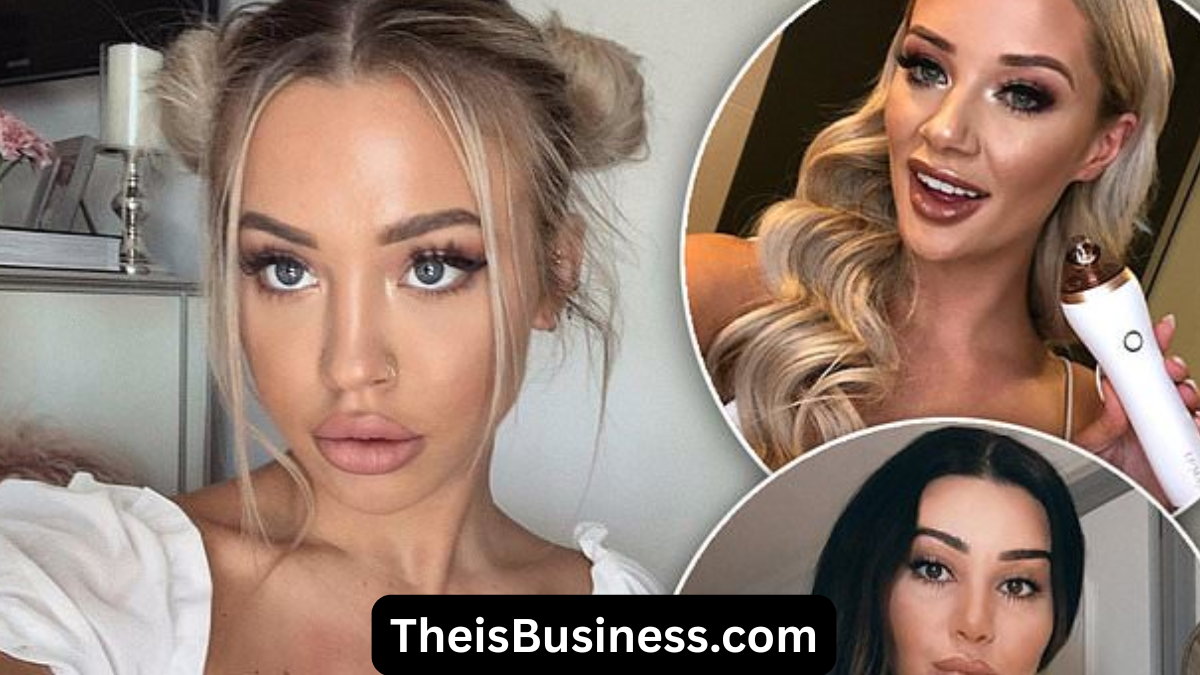The Rise of the Influencer Culture
Influencers Goneeild Social media has evolved dramatically in the last decade. What began as a means for connection and sharing among friends transformed into a powerful marketing and cultural phenomenon. At the heart of this shift stood the rise of the influencer. These online personalities, leveraging platforms such as Instagram, TikTok, YouTube, and Twitter, cultivated followings ranging from thousands to millions. Brands saw their value and began paying these individuals to promote products, lifestyles, and ideas. Influencers became modern-day celebrities, dictating trends, shaping opinions, and commanding massive audiences.
However, with great visibility comes great scrutiny. While many influencers continue to maintain positive public images, a darker trend has emerged in recent years — a phenomenon increasingly referred to as “influencers goneeild.” This phrase reflects not just the decline of individual influencers but a broader cultural reckoning with the influencer industry as a whole.
Understanding “Goneeild” in the Influencer Context
The term “goneeild” is a slang variation often used to describe someone who has lost their way, deviated from their expected behavior, or descended into controversy or chaos. When applied to influencers, “goneeild” denotes instances where online personalities fall from grace due to scandals, unethical behavior, misinformation, or other negative public revelations.
The digital age has brought an unprecedented level of access to the personal lives of influencers. While this openness is part of what builds their brand, it also makes them vulnerable to public judgment. As a result, any misstep—whether intentional or accidental—can lead to instant backlash. And unlike traditional celebrities, influencers often lack public relations teams to manage these crises. This makes their downfalls more visible and, at times, more severe.
The Role of Cancel Culture and Public Accountability
Cancel culture plays a central role in the narrative of influencers goneeild. As audiences become more socially aware and morally critical, there is increasing pressure on influencers to behave responsibly. When influencers are caught making racist, sexist, homophobic, or otherwise harmful remarks or actions, the reaction is often swift and unforgiving.
In some cases, the backlash can be deserved, as when influencers engage in exploitative or illegal behavior. In others, the criticism may stem from misunderstandings or minor transgressions amplified by internet outrage. Regardless of the cause, the result is frequently the same: lost brand deals, disappearing followers, and tarnished reputations.
Influencers are no longer just content creators; they are expected to be role models, advocates, and public figures. This level of responsibility is difficult to maintain, especially when the pressures of constant content creation, fame, and financial success become overwhelming.
Mental Health and the Pressure to Perform
One of the most understated elements of influencers goneeild is the mental toll that constant visibility can take on an individual. Many influencers face burnout, anxiety, depression, and even identity crises. The need to present a perfect life online while grappling with real-world challenges creates an unsustainable duality. When influencers can no longer keep up with the expectations, they may spiral—sometimes publicly.
Numerous influencers have spoken out about the pressures they face, revealing the emotional costs behind their curated feeds. Some suffer breakdowns, take prolonged social media breaks, or quit altogether. Unfortunately, by the time they seek help, their brands may already be damaged.
The spectacle of an influencer’s decline is often watched with a mix of fascination and schadenfreude. Audiences who once idolized them may become critical observers, analyzing their every move and eagerly participating in their fall from grace.
Controversies and Scandals That Spark Decline
A common thread among influencers goneeild is controversy. This could range from inappropriate behavior, such as offensive jokes or comments resurfacing, to more serious issues like fraud, exploitation, or involvement in criminal activities. Some influencers face backlash for promoting harmful products, engaging in disingenuous giveaways, or spreading misinformation about health, politics, or social issues.
In today’s media environment, such incidents rarely remain hidden. Screenshots, video recordings, and digital footprints are easy to capture and even easier to disseminate. Once a scandal breaks, the internet acts as judge, jury, and executioner. Public opinion can shift rapidly, and the influencer’s career can collapse just as quickly.
These moments raise important ethical questions about the responsibilities of influencers and the consequences of unchecked digital power. Should they be held to the same standards as traditional media figures? What safeguards exist to prevent the spread of harmful content? These are questions still being grappled with in online spaces.
The Impact on Followers and Online Communities
When an influencer goes eild, the effect ripples out beyond their personal brand. Fans who once looked up to them may feel betrayed, confused, or disillusioned. Online communities built around an influencer’s persona can fracture or dissolve entirely. The emotional investment that followers place in their favorite influencers can amplify the sense of loss or betrayal.
For younger audiences, especially teenagers and children, the downfall of a beloved online figure can be particularly impactful. Many look to influencers for guidance, lifestyle inspiration, or validation. When these figures falter, it can disrupt the values and beliefs these fans have developed. This illustrates the immense influence — and therefore responsibility — that digital creators wield.
In some cases, communities try to hold influencers accountable by organizing boycotts, sharing informative posts, or encouraging more ethical alternatives. Others may rally behind their favorite influencer despite controversy, creating polarized fanbases that engage in online feuds.
Rebuilding After the Fall
Not every story of influencers goneeild ends in total ruin. Some manage to rebuild their reputation by issuing sincere apologies, demonstrating personal growth, or rebranding their content. The road to redemption, however, is complex and not always successful.
Rehabilitation often depends on the nature of the original controversy and the influencer’s response. A heartfelt acknowledgment of wrongdoing, tangible change in behavior, and consistent positive engagement with their audience can help restore credibility. On the other hand, insincere apologies or attempts to deflect blame can worsen the situation.
The public is becoming more adept at spotting performative acts. Influencers attempting comebacks need to approach their return with humility and transparency. In some cases, switching platforms, starting fresh, or even leaving the limelight altogether may be the most effective route to healing.
Industry Reflection and the Way Forward
The increasing number of influencers goneeild is causing both fans and marketers to reevaluate the structure of influencer culture. There’s growing awareness that fame on social media can be both fleeting and harmful when not grounded in authenticity and responsibility.
Brands are becoming more cautious about who they partner with, often conducting deeper background checks and placing contractual morality clauses to avoid becoming entangled in controversy. Social media platforms, too, are stepping in by enforcing stricter content policies and flagging misinformation.
At the same time, many content creators are taking steps to build healthier relationships with their audiences. Transparency, accountability, and ethical practices are becoming key differentiators in a saturated influencer market. The shift from perfectionism to relatability is helping newer influencers build more sustainable and supportive communities.
Cultural Commentary on Fame and Identity
The phenomenon of influencers goneeild also serves as a cultural mirror. It reflects society’s complex relationship with fame, identity, and morality. On one hand, audiences demand transparency and truth; on the other, they consume drama and scandal with fervor. This duality makes influencer fame inherently precarious.
The line between public and private life has blurred, and the pursuit of digital celebrity can easily lead individuals down a path of inauthenticity and self-destruction. The cautionary tales of influencers who have gone eild remind us that behind every Instagram filter or viral dance lies a person struggling with the same human challenges as anyone else.
Conclusion
The term “influencers goneeild” encapsulates more than individual scandals — it signals a reckoning within the influencer ecosystem. As digital creators navigate fame, responsibility, and the demands of an ever-watchful public, the need for transparency, integrity, and mental well-being has never been greater.
This evolution invites everyone — influencers, audiences, brands, and platforms — to participate in shaping a healthier online environment. The fall of an influencer does not need to be a spectacle; it can be a lesson. It can push the industry to mature, advocate for authenticity, and support creators not just as brands, but as people.
FAQs About “Influencers Goneeild”
What does “goneeild” mean in the context of influencers?
“Influencers goneeild” refers to instances where social media influencers experience a downfall or fall into controversy, often due to unethical behavior, scandals, or public backlash.
Why do influencers face such intense scrutiny?
Influencers have built careers on visibility and public engagement. Because their success depends on trust and relatability, any misstep Influencers Goneeild can result in rapid public criticism and consequences.
Are all influencers who go through controversy doomed?
Not necessarily. Some influencers recover by acknowledging mistakes, demonstrating growth, and reconnecting with their audience in meaningful ways. Others may choose to step away from the spotlight.
What role does cancel culture play in this phenomenon?
Cancel culture amplifies the consequences of bad behavior. While it can be a form of public accountability, it also has the potential to be punitive or reactionary without room for redemption.
How can influencers avoid going “goneeild”?
By being authentic, responsible, and aware of their influence, creators can build sustainable careers. Transparency, mental health care, and ethical practices also play important roles in longevity and trust.
Can brands protect themselves from influencer controversies?
Yes, through careful vetting, setting clear guidelines, and monitoring ongoing partnerships, brands can reduce their risk of being associated with problematic influencers.
Is the influencer industry changing?
Yes. There is a shift toward more mindful content creation, better mental health awareness, and increased demand for transparency. The industry is adapting in response to public expectations and past controversies.


